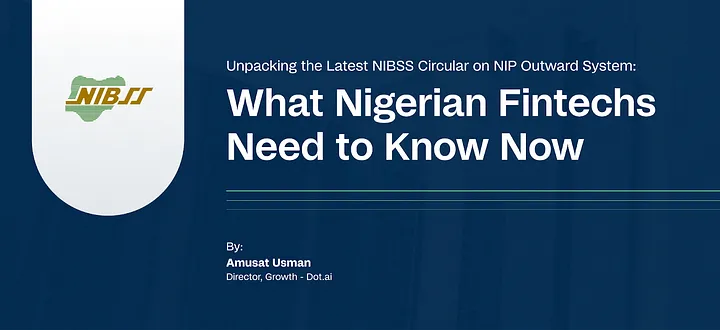NIBSS released a circular that has been making the rounds this week. There’s been a lot of speculation regarding this particular circular on the interwebs and office corners in the fintech industry. This has led to lots of questions:
What is NIBSS up to this time around? How is my fintech business affected by this new policy?
Before we get to the effects of this new update from Nigeria’s interbank settlement company, let’s dive in to see what the circular says.
The circular states that: “listing non-deposit taking financial institutions such as
Switching Companies (Switches), Payment Solution Service Providers (PSPs) and Super Agents (SA) as beneficiary institutions on your NIP funds transfer channels contravenes the CBN Guidelines on Electronic Payment of Salaries, Pensions, Suppliers and Taxes in Nigeria dated February 2014. For clarity, Switches, PSSPs and SAs may process outward transfers as inflows to Banks but are not to receive inflows as their licenses do not permit them to hold customers’ funds.”
To the layman, the quote above means that the next time you open your bank app to transfer funds, you won’t find certain financial institutions (FIs) on the destination/beneficiary bank list.
About 32 financial institutions with either super agent, switching company or payment solution service provider (PSSP) licenses will be delisted with immediate effect from the NIBSS NIP (NIBSS Instant Payments) list.
NIP Bank Beneficiary List
In recent times, You may have seen names like Zinternet KongaPay (MMO — Mobile Mobile Operator), Interswitch Financial Inclusion Services (IFIS) or Crowdforce (MMO — Mobile Mobile Operator) on your beneficiary bank list but the core question is, if they could collect inflow via the bank transfer, then Flutterwave and Paystack wouldn’t have to partner with Wema Bank and Titan Trust Bank respectively for their virtual account implementation?
Quite a twist, wouldn’t you say?
So it begs the question: If you tap on Zinternet Kongapay or Crowdforce on a bank app, these entities don’t issue NUBAN — so why were they on the NIP (NIBSS Instant Payments) bank list in the first place?
It means NIBSS simply returns all schemes integrated to NIP (NIBSS Instant Payments)as beneficiary banks irrespective of whether they were enabled for inflow or not. I would assume this could easily be fixed internally.
From a product standpoint — your fintech will no longer receive inflow via NIP if you’re not a licensed deposit-taking entity such as microfinance banks (e.g Dot MFB, Kuda, Opay), deposit money banks (e.g GT Bank, UBA etc).
However, as a fintech, you (still) can have the direct integration with NIP for fund transfer (as your license (switching companies, payment solution service providers and super agents licenses) allows
This circular impacts payment products in only one way:
If you have a “Pay with Transfer” product as a PSSP/Switch/Super agent — and you were ‘miraculously’ added to the list — you can’t do payment collections anymore. You need to collaborate with a deposit-taking entity for all your collections as illustrated above with the “Paystack and Titan Bank Use case”.
So, If you are a new fintech (savings, remittance, loans etc) with a wallet service that allows the option to fund a wallet with ‘bank transfer’, it is now required to either partner directly a licensed MFB or DMB or Payment Switch with partnership with DMBs with a clear understanding of the settlement limit you are afforded.
In conclusion, this policy serves the fundamental purpose of safeguarding customer funds by entrusting them to entities duly licensed and certified to handle such transactions. Moreover, it prompts a thoughtful consideration of its potential impacts on the future dynamics within the fintech ecosystem.






